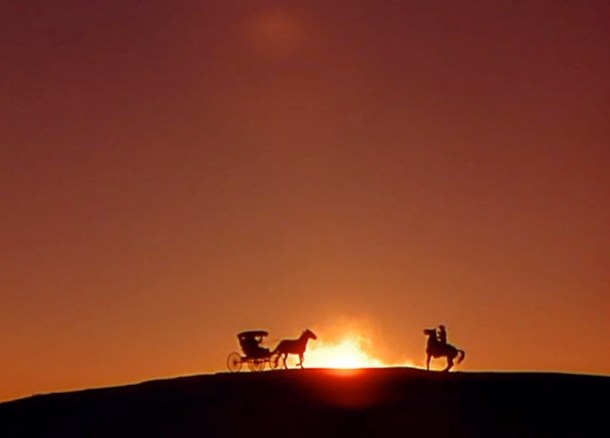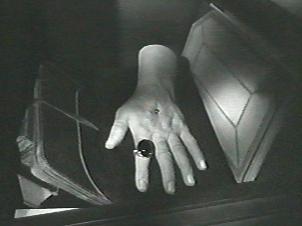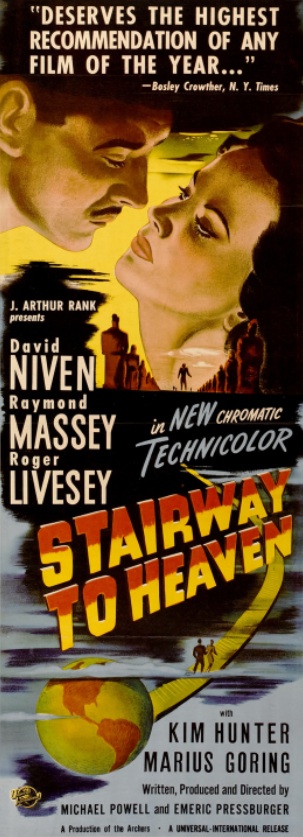When reviewers assembled their “best of the year” lists at the beginning of 1947, American films had a pretty poor showing.
NY Times film critic Bosley Crowther wrote that Hollywood had “run dry of ideas.” The National Board of Review picked Laurence Olivier’s Henry V as the best film of the year (it was originally released in Britain in 1944). They named Olivier the best actor of the year and Anna Magnani as best actress for Roberto Rossellini’s Roma, Città Aperta (which was originally released in Italy in 1945). Archer Winsten, critic for the NY Post, listed only three American films among his ten best, and said that Hollywood should work to be “half as clever, twice as honest.” He also invited them to contemplate “how badly they have failed this year.”
The only Hollywood film to receive nearly universal acclaim was William Wyler’s The Best Years of Our Lives, which I wholeheartedly agree with. It’s still an exceptional film.
Unlike the American film critics of 1947, who were beginning to discover the joys of what would come to be known as “art house cinema,” I mostly watched Hollywood films last year, and enjoyed plenty of them. There was a period over the summer when I despaired that there might have been only one or two really good films released in 1946, but by the end of the year, I’d seen enough crackers to make narrowing it down to just ten a difficult task.
 1. The Best Years of Our Lives
1. The Best Years of Our Lives
The Best Years of Our Lives is a gorgeously filmed, beautifully acted film about real life, with no contrived plotting or overwrought emotions. It perfectly captured the mood of the times and is a realistic, unvarnished look at returning servicemen. It’s an overwhelming emotional experience precisely because it doesn’t strain for high emotions. Despite all the personal difficulties its characters face, it’s an uplifting film, full of quiet hope for the future. It rightly swept the 19th Academy Awards, and was the best film I saw from 1946.
 2. It’s a Wonderful Life
2. It’s a Wonderful Life
It’s hard to find anything new to say about Frank Capra’s perennial holiday favorite It’s a Wonderful Life, so I won’t try. If you’ve never seen it in its entirety, however, you might mistakenly think that it’s sappy, sentimental claptrap, but it’s actually a film full of dark moments, with a sense of desperation that’s always threatening to bubble to the surface. Even without its deus ex machina ending, however, it would still be a rich, satisfying story about what’s truly important in life.
 3. La Belle et la Bête
3. La Belle et la Bête
Jean Cocteau’s take on the classic 18th-century fairy tale is a nearly perfect film, and one of the most magical pieces of filmmaking I’ve ever seen. While the special effects are simple, the uncanny power of this film is undeniable. Unlike some of his more political contemporaries, Cocteau’s only allegiance in life was to art, and it is appropriate that he made this film as a reaction to his critics, since it’s one of the most beautiful and enduring films of all time.
 4. Paisà
4. Paisà
Paisà is a sprawling, chaotic picture of life in Italy during the last days of World War II that stands head and shoulders above the more famous Roma, Città Aperta as an artistic achievement. Over the course of six vignettes, the film explores a variety of Italian characters’ attempts to communicate with and understand their American occupiers. Roma, Città Aperta is a very good film, but Paisà is one of the most affecting and least cliched war films I’ve ever seen.
 5. A Matter of Life and Death
5. A Matter of Life and Death
Michael Powell and Emeric Pressburger’s brilliant fantasy is satisfying on both a technical level and an emotional level. This tale of a British pilot who believes he has cheated death and is caught between earth and the afterlife is funny, romantic, clever, and beautifully acted. A mixture of beautiful Technicolor and surreal black and white, A Matter of Life and Death is stylistically way ahead of its time. It’s one of the best British films of all time, and is a must-see for all film buffs.
 6. Notorious
6. Notorious
Alfred Hitchcock’s second film with the beautiful Ingrid Bergman was another perfect marriage of director and star. An elegant, romantic, and understated picture, Notorious builds suspense not with an overly complicated plot but with a love triangle between Bergman, Cary Grant, and Claude Rains that is fraught with danger. Hitchcock’s use of simple but powerful motifs — such as a key to a wine cellar passed from hand to hand at an elegant party — sets the film apart from other espionage thrillers.
 7. The Big Sleep
7. The Big Sleep
Howard Hawks’s adaptation of Raymond Chandler’s first Philip Marlowe novel may have a byzantine, nearly impenetrable plot, but it’s steeped in noir atmosphere and features Humphrey Bogart and Lauren Bacall in some of their most memorable roles. Adapted for the screen by Leigh Brackett, William Faulkner, and Jules Furthman, it’s one of the most quotable movies of all time, with a sense of constant movement beneath the surface, and of dark goings-on that even Philip Marlowe may never be able to fully unravel.
 8. My Darling Clementine
8. My Darling Clementine
John Ford’s My Darling Clementine may be wildly historically inaccurate, but it’s one of the great westerns, full of iconic scenes, memorable performances, finely staged action, and little moments that would be copied over and over again in westerns in the decades that followed. Henry Fonda’s restrained performance as legendary lawman Wyatt Earp is one of the best I’ve ever seen in a western, and the final shootout at the O.K. Corral is a hypnotic maelstrom of dust and flying lead.
 9. My Reputation
9. My Reputation
Curtis Bernhardt’s My Reputation stars Barbara Stanwyck as a young widow who falls for a charming Army major played by George Brent. As a member of a traditional upper-crust family, however, her mother, her two sons, and friends all disapprove of the relationship and expect her to stay chaste for the rest of her life. On paper, this movie didn’t interest me, but once I started watching it, it quickly drew me in. The situations and dialogue are realistic, and the acting, direction, editing, and cinematography are all top-notch.
 10. Gilda
10. Gilda
Charles Vidor’s Gilda is the film that made Rita Hayworth the biggest sex symbol of the ’40s. A film noir set in the steamy, exotic city of Buenos Aires, it’s full of nasty double-crosses, intrigue, high-stakes gambling, and infidelity. Gilda’s relationship with her old flame Johnny Farrell (played by Glenn Ford) takes plenty of nasty physical and psychological turns, and while you might not remember the movie’s plot a month after watching it, you’ll never forget Hayworth’s risqué nightclub performances or the sexual tension, which is thick enough to hack through with a machete.
Honorable Mentions:
Bedlam, Cloak and Dagger, Die Mörder sind unter uns, Green for Danger, The Killers, Kris, Night Editor, The Stranger.
 I normally don’t review shorts, but Half-Wits Holiday (a reworking of the 1935 Three Stooges short Hoi Polloi) marked a milestone for the Stooges, since it was Curly’s last film.
I normally don’t review shorts, but Half-Wits Holiday (a reworking of the 1935 Three Stooges short Hoi Polloi) marked a milestone for the Stooges, since it was Curly’s last film.






















